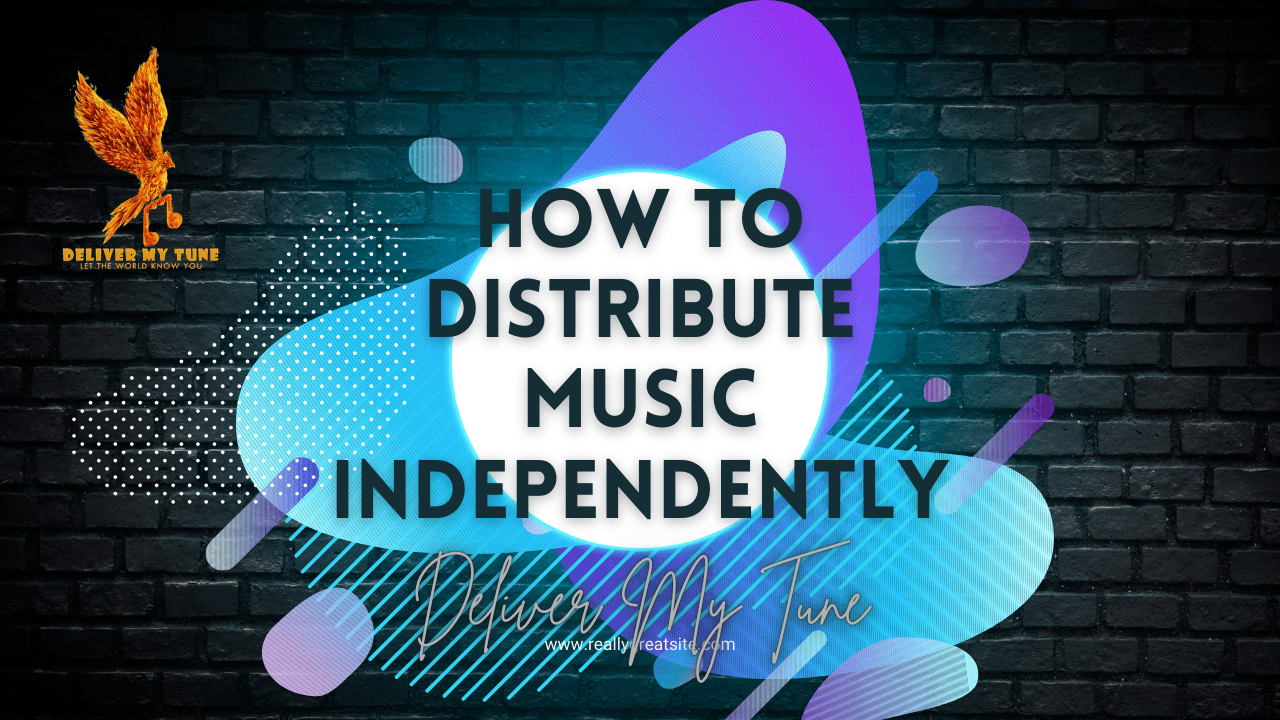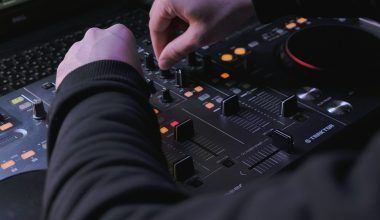In today’s music industry, independent music distribution allows artists to maintain control of their work, reach a global audience, and keep a more significant portion of their royalties. The digital landscape offers powerful tools for artists who want to bypass traditional labels and still achieve success. This guide explores the essentials of independent music distribution, from preparing your release to choosing the right distributor, marketing strategies, and more.
What Is Independent Music Distribution?
Independent music distribution refers to releasing music without being affiliated with a major label. Thanks to digital platforms, artists now have the ability to share their creations globally, retaining rights and earnings in the process. This has led to an explosion of independent artists who have achieved great success on their own terms.
Why Independent Distribution?
- Creative Control: Independent distribution lets you make decisions on music, artwork, and marketing.
- Increased Earnings: By distributing independently, you earn a more significant share of streaming revenue and sales.
- Freedom from Contracts: Unlike traditional label agreements, you are free to work on your own projects without restrictions.
Understanding Distribution Models
The music industry offers several distribution models for independent artists. It’s essential to understand these models before choosing a service.
- Self-Distribution: You handle all aspects of your release. Ideal for artists with time and a DIY approach.
- Digital Distribution Platforms: Services like Deliver My Tune and DistroKid handle distribution, and they charge a fee for platform access.
- Revenue-Sharing Platforms: Some services distribute your music for free but take a percentage of the earnings, like ReverbNation.
Each model has its pros and cons, so choose one that aligns with your resources, budget, and career goals.
Top Music Distribution Platforms for Independent Artists
Selecting the right distributor is crucial. Here’s an overview of some top platforms:
- Deliver My Tune: A comprehensive service distributing music to over 100 platforms, including Spotify and Apple Music. It offers services like AI mastering and social media support.
- TuneCore: Known for its user-friendly interface and robust analytics, it has a fixed fee structure.
- CD Baby: Offers both digital and physical distribution, along with useful promotional tools.
- DistroKid: One of the most affordable options, DistroKid charges an annual fee with unlimited releases.
- Amuse: Allows free distribution with a premium tier for extra features.
Evaluate platforms based on pricing, platform reach, and additional services to find the best fit for your needs.
Preparing Your Music for Distribution
Before uploading your music, ensure it meets industry standards for digital distribution. Here’s a quick checklist:
Quality Control
- Audio Quality: Distributors usually require high-quality WAV or FLAC files. Avoid compressed formats like MP3.
- Artwork: Ensure your cover art is high-resolution (usually 3000×3000 pixels) to meet platform requirements.
- Metadata: Correct metadata (song title, artist name, genre) is essential for accurate tracking and discovery.
- ISRC and UPC Codes: These identifiers help track your music’s sales and streams, often provided by distributors.
Creating a Distribution Timeline
Timing is everything in music distribution. A well-planned release schedule allows for promotion and increases the likelihood of playlist placements.
Key Steps in Your Timeline
- Set Your Release Date: Choose a date at least 4-6 weeks in advance to give yourself time for marketing.
- Pre-Save Campaigns: Many platforms offer pre-save options, allowing fans to add your music before it drops.
- Social Media Teasers: Start promoting your release on social media with sneak peeks or artwork to build anticipation.
- Email Marketing: Send reminders to your email subscribers, sharing insights about the creation process and what they can expect.
Plan each step with your audience in mind. Having a pre-save campaign, for instance, can significantly boost streams on release day.
Understanding Royalties and Revenue
Independent artists earn money through different types of royalties, each impacting their income potential. Here’s a breakdown:
- Mechanical Royalties: Generated from sales and streams, paid by platforms like Spotify.
- Performance Royalties: Earned from radio plays and public performances.
- Sync Royalties: When your music is used in movies, commercials, or TV shows, you receive sync royalties.
Distributors like Deliver My Tune provide access to multiple royalty types, ensuring you capture every possible revenue stream.
Marketing Your Music for Maximum Reach
With your music distributed, the next step is to promote it effectively. Here are several marketing strategies for independent artists:
Social media platforms are excellent for promoting music, engaging fans, and sharing updates. Popular platforms for musicians include:
- Instagram: Share stories, live performances, and artwork teasers.
- TikTok: Post short videos or behind-the-scenes clips for viral potential.
- Twitter: Engage with fans and share release updates.
YouTube Marketing
YouTube is a powerful tool for musicians. Upload music videos, lyric videos, and even live performances to build a presence. Use YouTube’s SEO features, such as keywords and tags, to increase visibility.
Playlist Submission
Playlist placements on Spotify and Apple Music can significantly boost streams. Submit your tracks to both editorial playlists (managed by platforms) and independent playlists curated by third-party companies or influencers.
Press Outreach
Pitch your music to blogs and online publications. Coverage on music blogs can enhance credibility and attract new listeners.
Email Marketing
Email is often overlooked, but it’s a direct way to connect with fans. Send newsletters with updates, exclusive content, and tour information.
Collaborations
Collaborating with other artists is an effective way to reach new audiences. It introduces your music to a broader fanbase and builds connections within the industry.
Using Data and Analytics
Data is invaluable in understanding your audience and making informed decisions. Here’s how analytics can improve your promotional strategies:
- Streaming Data: Use Spotify and Apple Music analytics to see which tracks are performing well and which demographics are most engaged.
- Demographics: Age, gender, and location data help tailor your marketing campaigns.
- Engagement Metrics: Look at metrics like saves, shares, and playlist adds to gauge listener interest.
Pricing Structures in Independent Distribution
Independent music distribution platforms typically offer the following pricing models:
- Flat Fees: You pay a one-time fee per release or per album, as offered by CD Baby.
- Annual Subscriptions: DistroKid charges an annual fee for unlimited releases.
- Revenue Sharing: Some distributors take a percentage of your earnings rather than charging upfront.
Understand the fees associated with each distributor, including hidden costs like renewal fees or additional charges for special features.
Leveraging Additional Services from Distributors
Many distribution services offer additional services tailored to independent artists. Here are some valuable add-ons:
- AI Mastering: Services like Deliver My Tune use AI to enhance your music’s audio quality.
- Social Media Management: Outsource your social media for consistent engagement with fans.
- Artist Portfolio: Some distributors provide customizable portfolio websites to showcase your music, images, and videos professionally.
Overcoming Challenges in Independent Distribution
Independent distribution comes with its own set of challenges. Here’s how to tackle some common hurdles:
Marketing and Promotion
Without a label, artists handle all marketing efforts. A solid plan with a mix of social media, press, and playlist placements can help increase visibility.
Funding for Production
Without label backing, independent artists may need to fund their projects. Crowdfunding platforms like Kickstarter or Patreon allow fans to support your work financially.
Managing Multiple Roles
As an independent artist, you’re responsible for production, distribution, marketing, and sometimes even accounting. Use tools like Asana for project management and Hootsuite for social media scheduling.
Essential Digital Tools for Independent Musicians
Digital tools simplify many aspects of music production, distribution, and marketing. Here’s a list of must-have tools:
- Canva: Design social media posts, album covers, and other visuals.
- Hootsuite: Schedule posts across multiple social media platforms.
- SoundCharts: Analyze your music’s performance across streaming platforms and radio.
- Bandcamp: For independent music sales and direct fan engagement.
Expanding Your Revenue Sources
Streaming isn’t the only way to make money as an independent artist. Here are additional revenue streams to explore:
- Merchandise: Sell merchandise like t-shirts, hats, and posters to fans. Merch helps build your brand and provides extra income.
- Live Performances: Hosting live shows, including virtual concerts, allows direct fan interaction and generates revenue through ticket sales.
- Sync Licensing: Platforms like Songtradr help you license
Optimizing Your Release Strategy
The success of your music release often depends on timing and how well you build anticipation among your audience. Here’s a breakdown of the steps to optimize your release strategy:
- Set SMART Goals: Define clear goals for your release, such as the number of streams, playlist additions, or fan engagement targets.
- Build a Content Calendar: Create a calendar to organize promotional activities for your release. Start promoting 4-6 weeks in advance with regular social media posts, teasers, and email updates. Consistency keeps your fans engaged and excited.
- Engage with Fans Pre- and Post-Release: Leading up to and after the release, stay active on social media and respond to comments, share fan posts, and hold live sessions. These efforts create a sense of community around your music.
- Leverage User-Generated Content (UGC): Encourage fans to create their own content, like sharing a snippet of your song in their stories or creating TikTok videos. UGC helps spread your music organically and increases visibility among potential new fans.
Mastering the Art of Fan Engagement
Keeping your fans engaged is vital for sustaining long-term success. Here’s how you can build a loyal fanbase:
Personalize Interactions
Reply to comments, messages, and tags on social media. Personalized interactions make fans feel valued and can help deepen their connection with your music.
Create Exclusive Content
Give your fans something unique by sharing exclusive content. This could include behind-the-scenes videos, early access to music, or live Q&A sessions. Fans who feel they’re getting special access are more likely to support you continuously.
Host Contests and Giveaways
Contests are a fun way to get fans excited. Hold giveaways for concert tickets, signed merchandise, or exclusive music. You can also use these opportunities to encourage fans to share your content with their network, increasing your reach.
Build a Community
Consider creating a fan club or online community, such as a private Facebook group or a Discord server. By offering a space for fans to interact, you create a sense of belonging that keeps them engaged over the long term.
Scaling Your Independent Music Career
As your fanbase grows, so do your responsibilities. Scaling your career means investing in your brand and taking steps to reach larger audiences. Here’s how to go about it:
- Expand Your Team: Eventually, handling all aspects of your career alone may become overwhelming. Consider hiring a manager, publicist, or social media assistant to free up time for music creation.
- Upgrade Your Equipment and Production Quality: As your music gains traction, invest in better recording equipment or studio time to improve production quality. High-quality music has a better chance of gaining traction on major playlists.
- Network with Industry Professionals: Attend music industry events, workshops, and conferences. Networking can open doors to collaborations, features, and even sync licensing opportunities.
- Explore International Markets: Platforms like Deliver My Tune distribute music worldwide, so take advantage of global opportunities. Translating content or targeting ads to international markets can introduce your music to listeners around the world.
- Collaborate with Influencers: Partnering with influencers who align with your music can broaden your audience. Many influencers are willing to promote independent artists, especially if the music resonates with their followers.
Overcoming Common Pitfalls in Independent Music Distribution
Independent artists face unique challenges that require patience and adaptability. Here are some common issues and how to overcome them:
Financial Constraints
Independent music production, promotion, and distribution come with costs. If you’re short on funds, prioritize spending on essential aspects, such as high-quality audio production and key promotional efforts. Consider crowdfunding or applying for grants that support independent artists.
Burnout
Balancing music creation with business and marketing efforts can be exhausting. Schedule regular breaks, set boundaries, and consider bringing in help as you scale. Remember, your mental and physical health are essential for long-term success.
Staying Relevant
Music trends change rapidly, and staying relevant requires adapting to the shifting industry landscape. Keep up with industry news, study successful artists, and stay flexible with your music style and promotional tactics.
Building and Retaining a Fanbase
While initial success may be exciting, building a lasting career requires consistency. Maintain regular interaction with your audience, continue creating content, and keep offering value to your fans. A strong connection with fans ensures they stay with you even as trends change.
Legal Considerations for Independent Artists
As an independent artist, protecting your intellectual property is vital. Here are some legal steps to consider:
- Copyright Your Music: Register your songs with a copyright office to protect against unauthorized use.
- Trademark Your Brand: If you’re serious about building a brand, trademark your artist name and logo. This prevents others from using your name in a way that could confuse your audience.
- Licensing Agreements: If you collaborate with other artists, ensure you have a licensing agreement. This agreement outlines how royalties will be split and ensures each party’s rights are protected.
- Consider Publishing: Publishing rights allow you to collect royalties from compositions used in other mediums. You can either manage publishing yourself or work with a third-party publisher for broader reach.
Having legal protection for your music and brand is essential for an independent artist. It ensures that all your hard work is safeguarded and that you retain control over your creations.
Looking Ahead: The Future of Independent Music Distribution
The future of music distribution is promising for independent artists, with constant advancements in technology and audience engagement methods. Here are some emerging trends to watch:
- Artificial Intelligence (AI) in Music Production: AI tools like Deliver My Tune’s AI mastering service make high-quality production accessible to all artists. AI-based tools are evolving and could further simplify the music-making process.
- Blockchain for Music Rights Management: Blockchain technology offers transparent and secure transactions, potentially revolutionizing royalty payments and music rights management for independent artists.
- VR Concerts and Experiences: Virtual reality is set to create new concert experiences. Independent artists could use VR to connect with fans globally, creating immersive performances that stand out.
- Increased Playlist Diversity: With growing demand for independent music, playlists curated specifically for indie artists are becoming popular. This trend gives artists more opportunities to be discovered without competing with major label artists.
Independent music distribution is evolving, making it an exciting time for artists worldwide. Staying aware of these trends and adapting to changes will help you stay relevant and seize new opportunities as they arise.
Conclusion
Independent music distribution empowers artists to shape their careers without the constraints of traditional labels. By understanding the distribution landscape, building strong marketing strategies, engaging with fans, and leveraging new tools, artists can successfully distribute their music independently and thrive in today’s digital music world. Platforms like Deliver My Tune provide essential support, from distribution to social media management, making the journey easier and more accessible for independent artists.
Success in the independent music industry comes down to determination, adaptability, and a commitment to connecting with fans. Embrace the freedom and opportunities that come with independent distribution, and take control of your musical journey. With the right resources and strategies, your music can reach new heights and resonate with listeners worldwide.
Related Articles:
For further reading, explore these related articles:
- How to Create Music Distribution for Independent Artists: A Step-by-Step Guide
- Promo Cards on Spotify: A Game Changer for Artists
- The Ultimate Guide to Choosing the Best Music Distribution Service in India
For additional resources on music marketing and distribution, visit Deliver My Tune.






